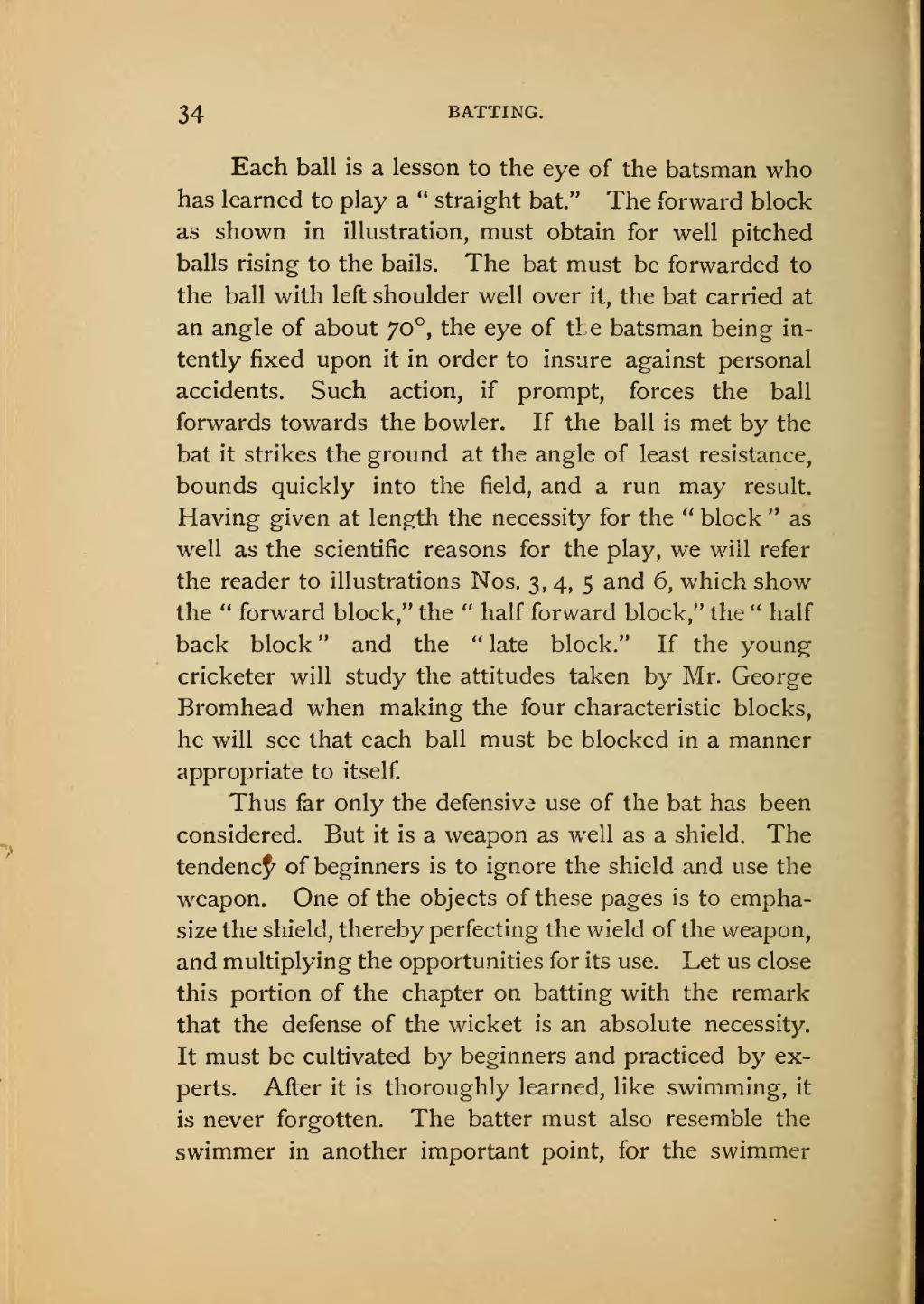Each ball is a lesson to the eye of the batsman who has learned to play a "straight bat." The forward block as shown in illustration, must obtain for well pitched balls rising to the bails. The bat must be forwarded to the ball with left shoulder well over it, the bat carried at an angle of about 70°, the eye of the batsman being intently fixed upon it in order to insure against personal accidents. Such action, if prompt, forces the ball forwards towards the bowler. If the ball is met by the bat it strikes the ground at the angle of least resistance, bounds quickly into the field, and a run may result. Having given at length the necessity for the "block" as well as the scientific reasons for the play, we will refer the reader to illustrations Nos. 3, 4, 5 and 6, which show the "forward block," the "half forward block," the "half back block" and the "late block." If the young cricketer will study the attitudes taken by Mr. George Bromhead when making the four characteristic blocks, he will see that each ball must be blocked in a manner appropriate to itself.
Thus far only the defensive use of the bat has been considered. But it is a weapon as well as a shield. The tendency of beginners is to ignore the shield and use the weapon. One of the objects of these pages is to emphasize the shield, thereby perfecting the wield of the weapon, and multiplying the opportunities for its use. Let us close this portion of the chapter on batting with the remark that the defense of the wicket is an absolute necessity. It must be cultivated by beginners and practiced by experts. After it is thoroughly learned, like swimming, it is never forgotten. The batter must also resemble the swimmer in another important point, for the swimmer

